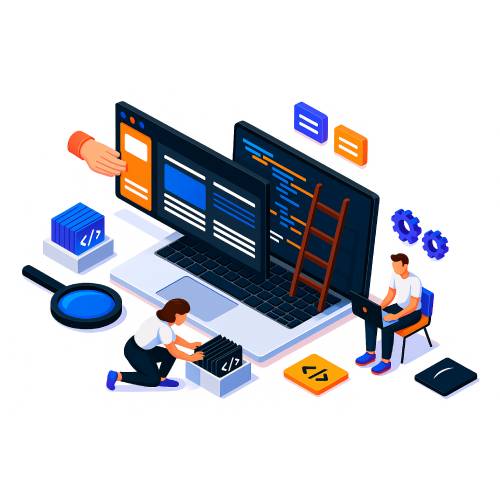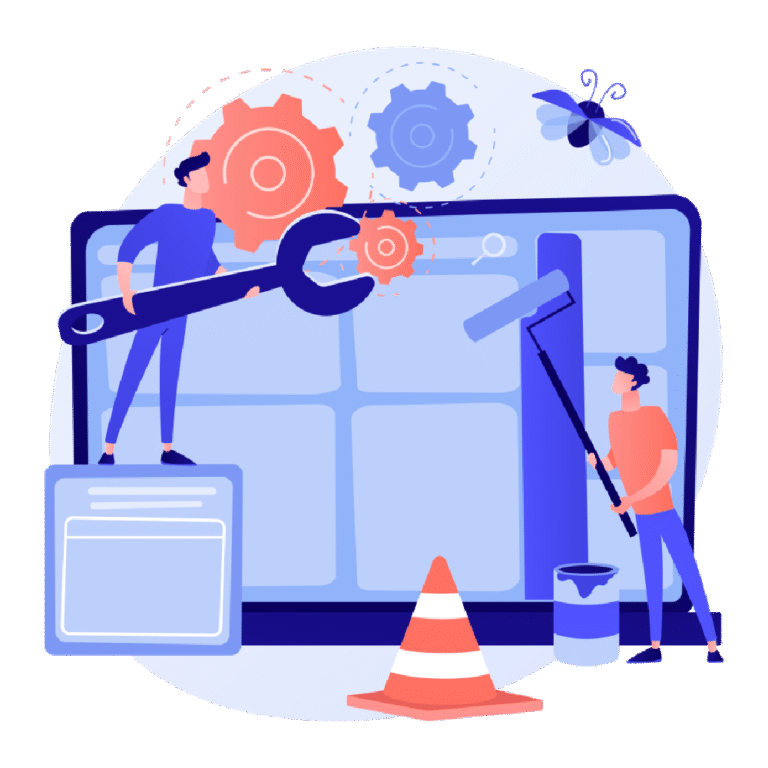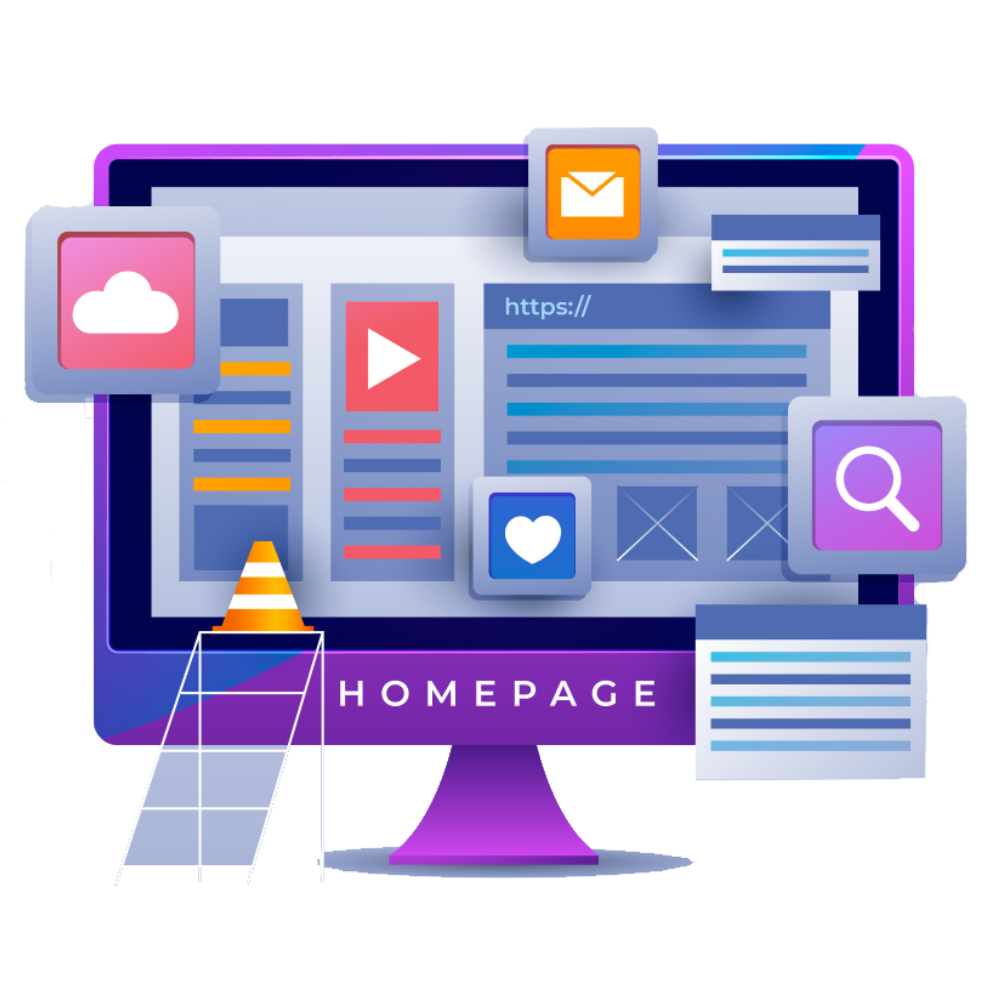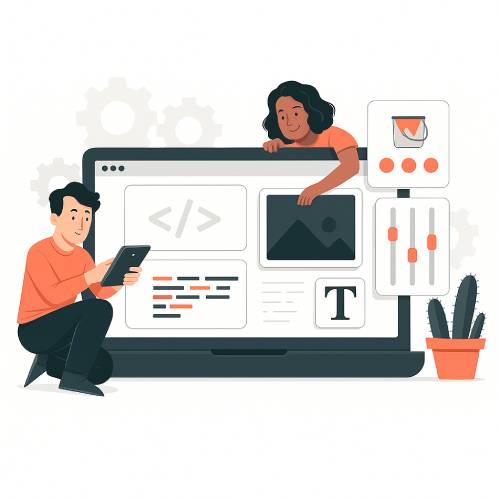
Website Development
Web development as a service refers to the professional creation, design, and maintenance of websites tailored to meet the unique needs of businesses and individuals. It goes beyond just building web pages—it includes developing responsive designs, ensuring fast performance, integrating secure payment gateways, optimizing for search engines, and enabling seamless user experiences across devices. With web development services, companies can establish a strong online presence, enhance brand credibility, and connect with their target audience effectively. These services often cover both frontend and backend development, content management systems, e-commerce solutions, and custom web applications.

Website Audit
A website audit is a detailed evaluation of a website to identify strengths, weaknesses, and opportunities for improvement across multiple areas such as performance, SEO, user experience, and security. It begins with a technical audit that checks crawlability, indexing, site speed, mobile responsiveness, and overall security. An SEO audit then examines on-page factors like meta tags, keywords, and content structure, along with off-page elements such as backlinks and domain authority.

Website Maintenance
Website maintenance is the ongoing process of keeping a website updated, secure, and fully functional to ensure a smooth user experience and optimal performance. It involves regularly checking for and fixing technical issues such as broken links, errors, or downtime, as well as updating software, plugins, and security patches to protect against vulnerabilities. Maintenance also includes updating website content, images, and features to keep information relevant and engaging for visitors. Performance monitoring, such as improving page load speed, mobile responsiveness, and SEO optimization, is an essential part of the process to maintain search engine rankings and user satisfaction

Android Apps
Android apps are software applications designed to run on devices powered by the Android operating system, which is one of the most widely used mobile platforms in the world. These apps can serve a variety of purposes, including communication, entertainment, education, business, health, and more, making them an essential part of everyday digital life. Built using programming languages like Java, Kotlin, or frameworks such as Flutter and React Native, Android apps are developed to provide smooth functionality, intuitive design, and compatibility across different devices and screen sizes.

IOS/MacOS Apps
ChatGPT said:
iOS and macOS apps are applications specifically developed to run on Apple’s ecosystem, including iPhones, iPads, and Mac computers. Known for their smooth performance, intuitive design, and high level of security, these apps are built using Swift or Objective-C and follow Apple’s strict development guidelines to ensure quality and consistency. iOS apps are distributed through the App Store, reaching millions of users worldwide, while macOS apps enhance productivity and functionality on desktop systems. Both platforms provide advanced features such as seamless integration with Apple services (iCloud, Siri, Apple Pay), optimized performance across devices, and strong privacy protections.

Windows/Linux Apps
Windows and Linux apps are software applications built to run on two of the most widely used desktop operating systems in the world. Windows apps are known for their broad compatibility, user-friendly interface, and integration with Microsoft services, making them highly popular for personal use, business, and gaming. Linux apps, on the other hand, are valued for their open-source nature, customization, speed, and security, making them a preferred choice for developers, enterprises, and users seeking flexibility and control. Both platforms support a wide range of applications, from productivity tools and enterprise software to multimedia and development environments.

CMS
A Content Management System (CMS) is a software platform that allows users to create, manage, and update digital content on websites without requiring advanced technical skills. It provides an easy-to-use interface where text, images, videos, and other media can be added or edited, making website management more efficient and accessible. Popular CMS platforms like WordPress, Shopify, Joomla, and Drupal offer a wide range of themes, plugins, and customization options to suit different business needs, from simple blogs to complex e-commerce stores. A CMS also ensures better collaboration, as multiple users can work together on content creation and publishing with defined roles and permissions.

Chrome Extensions
Chrome extensions are lightweight software programs that extend the functionality of the Google Chrome browser, allowing users to customize their browsing experience and add new features. They are built using web technologies like HTML, CSS, and JavaScript, making them accessible for developers to create and deploy. Chrome extensions can serve a wide range of purposes, from improving productivity and managing tasks to enhancing security, blocking ads, or integrating with third-party services. Installed directly from the Chrome Web Store, these extensions run within the browser and can interact with web pages or provide quick tools through the toolbar.

Process Automation
Process automation is the use of technology to streamline, optimize, and automate repetitive tasks and workflows within a business, reducing manual effort and increasing efficiency. By implementing automation tools and software, organizations can handle routine processes such as data entry, report generation, customer communication, billing, and even complex operations like supply chain management or HR onboarding with minimal human intervention. This not only saves time and reduces the risk of errors but also allows employees to focus on higher-value tasks that require creativity and decision-making.
